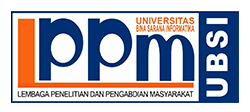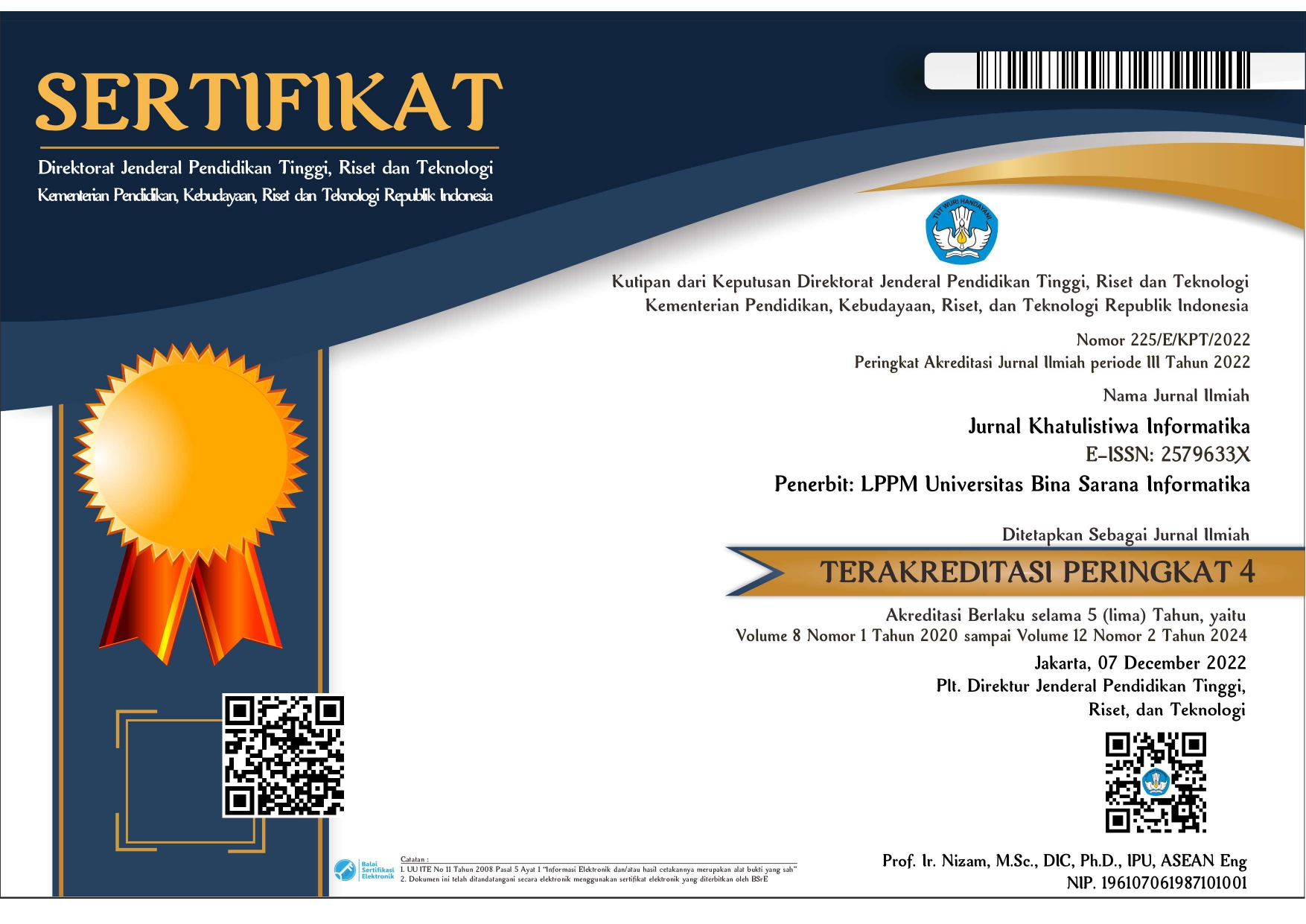KNOWLEDGE MANAGEMENT SYSTEM PADA DIVISI LALU LINTAS ANGKUTAN JALAN DISHUBKOMINFO KOTA PONTIANAK MENGGUNAKAN METODE SPESIFIC ACTION DAN PENDEKATAN AFTER ACTION REVIEW BERBASIS WEB DAN MOBILE APPLICATION
Sari
Teks Lengkap:
PDF (English)Referensi
Alvani, M., & Leidner, D. (2001). Knowledge management and knowledge management systems: Conceptual foundations and research issues. MIS Quarterly, 25(1), 107-136.
Award, Elias M. & Ghaziri, Hasan M.(2003). Knowledge Management,New Jersey .Person Education. Inc.
Choudhury, Abhinab. (Desember, 2011). Waterfall Model. Diakses pada 1 September 2014. http://www.sdlc.ws/waterfall-model/
Dharwiyanti, Sri. (2003). Pengantar Unified Modeling Language (UML).http://Ilmukomputer.com/article/pengantaruml.htm.
Herbert. (2007). Pembangunan Kerangka Kerja Implementasi Knowledge Management (Studi Kasus Insutri Garmen). Bandung : Tesis ITB
Jennex, M.E. (2007). Knowledge Management in Modern Organizations. Idea Group Publishing : Hershey
Knoco. (2012). After Action Review- a simple low-learning toolsanyone can use. Diakses 10 Juli 2014, http:/knoco.com/after-action-review.htm
Malhotra, Yogest (2002), Knowledge Codification and Coordination,74, http:// www.kmnetwork.com/CBK/WorkingKnowledge4.pdf
Mirza, T.M.. (2009). Perancangan Arsitektur Knowledge Management System Studi Kasus: PT. Pos Kanwil V Jabar. Bandung : Tesis ITB.
Nonaka, Ikujiro & Noboru Konno. (1998). The Concept of “Ba”: Building Foundation for Knowledge Creation, California Management Review Vol. 40 No. 3.
Nugroho,Adi. (2010). Rekayasa Perangkat Lunak Berorientasi Objek dengan Metode USDP (Unified Software Development Process).Yogyakarta: ANDI Publishing.
Suryana, Febriyanno.(2014). Metode Pengujian Perangkat Lunak (Blackbox). Diakses 14 Agustus 2014. http ://www.slideshare.net/ iwankurniarasa/ metodepengujianblackbox.ppt.
Tiwana. Amrid (2002), Knowledge Management Toolkit, The : Orchestrating IT, Strategy, and Knowledge Platforms, 2nd ed, Prentice Hall.
Tobing, Paul.(2007). Knowledge Management Concept Architecture dan Implementasi, Januari, Bandung.
Unifed Model Language Organisation. (2012). Get Started With UML. Diakses 17 Juni, 2014. http://www.uml.org/
Wanhen. (2010) .Apakah yang dimaksud dengan UAT (User Acceptance Testing). Diakses 15 Juli 2014.http://www.exforsys.com/tutorials/testing/what-is-user-acceptance-testing.html
Widayana, Lendy.(2005). Knowledge Management : Meningkatkan Daya Saing Bisnis. Jawa Timur :Bayumedia Publishing
Yusuf, M. (2012). Chapter II. Repositori Universitas Sumatera Utara. Diunduh 2 Agustus 2014. http://repository.usu.ac.id/bitstream/123456789/31511/3/Chapter%20II.pdf
DOI: https://doi.org/10.31294/jki.v3i1.1657
DOI (PDF (English)): https://doi.org/10.31294/jki.v3i1.1657.g1209
##submission.copyrightStatement##


Dipublikasikan oleh LPPM Universitas Bina Sarana Informatika
Email : jurnalkhatulistiwainformatika@bsi.ac.id

This work is licensed under a Creative Commons Attribution-ShareAlike 4.0 International License







